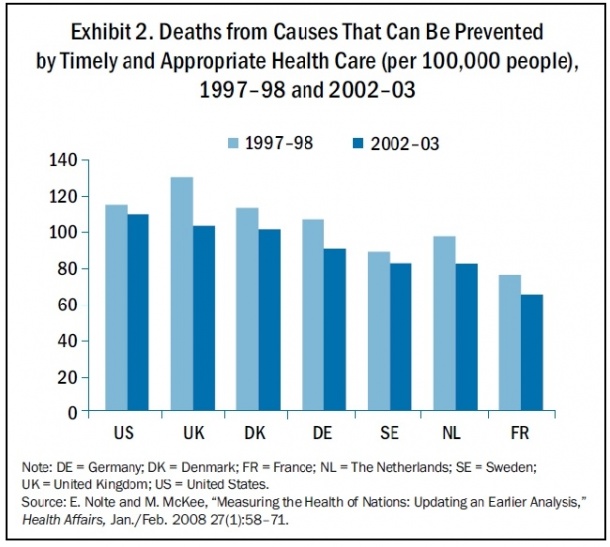After FDR passed away, Truman became president (1945-1953), and his tenure is identified by the Cold War and Communism. The health care concern lastly moved into the center arena of national politics and got the unreserved assistance of an American president. Though he served throughout a few of the most virulent anti-Communist attacks and the early years of the Cold War, Truman completely supported nationwide medical insurance.
Required health insurance became knotted in the Cold War and its challengers were able to make "socialized medicine" a symbolic issue in the growing crusade versus Communist impact in America. Truman's strategy for nationwide health insurance in 1945 was various than FDR's strategy in 1938 because Truman was highly committed to a single universal detailed health insurance plan.
He stressed that this was not "socialized medication." He also dropped the funeral advantage that contributed to the defeat of national insurance coverage in the Progressive Period. Congress had mixed responses to Truman's proposition. The chairman of the Home Committee was an anti-union conservative and declined to hold hearings. Senior Republican Senator Taft stated, "I consider it socialism.
The AMA, the American Medical Facility Association, the American Bar Association, and many of then nation's press had no blended feelings; they hated the strategy. The AMA declared it would make physicians servants, despite the fact that Truman stressed that medical professionals would be able to choose their technique of payment. In 1946, the Republicans took control of Congress and had no interest in enacting nationwide medical insurance.
Truman reacted by focusing even more attention on a nationwide health expense in the 1948 election. After Truman's surprise success in 1948, the AMA thought Armageddon had come. They evaluated their members an extra $25 each to withstand national health insurance coverage, and in 1945 they invested $1.5 million on lobbying efforts which at the time was the most pricey lobbying effort in American history.
He stated socialized medication is the keystone to the arch of the socialist state." The AMA and its advocates were again very effective in linking socialism with national health insurance, and as anti-Communist belief increased in the late 1940's and the Korean War started, nationwide medical insurance became vanishingly improbable (how many countries have universal health care).
Compromises were proposed but none succeeded. Rather of a single medical insurance system for the whole population, America would have a system of personal insurance for those who could afford it and public well-being services for the poor. Discouraged by yet another defeat, the supporters of medical insurance now turned toward a more modest proposition they hoped the nation would embrace: healthcare facility insurance coverage for the aged and the beginnings of Medicare.
The smart Trick of How Does Canadian Health Care Work That Nobody is Discussing
Union-negotiated health care advantages also served to cushion workers from the impact of healthcare costs and undermined the movement for a government program. For might of the very same factors they stopped working prior to: interest https://how-long-does-postpartum-depression-last.mental-health-hub.com/ group influence (code words for class), ideological differences, anti-communism, anti-socialism, fragmentation of public policy, the entrepreneurial character of American medication, a custom of American voluntarism, getting rid of the middle class from the union of advocates for modification through the alternative of Blue Cross personal insurance coverage strategies, and the association of public programs with charity, dependence, individual failure and the almshouses of years gone by.
The country focussed more on unions as a lorry for health insurance coverage, the Hill-Burton Act of 1946 related to medical facility expansion, medical research study and vaccines, the development of nationwide institutes of health, and advances in psychiatry. Lastly, Rhode Island congressman Aime Forand introduced a brand-new proposition in 1958 to cover health center expenses for the aged on social security.
But by concentrating on the aged, the regards to the debate started to change for the first time. There was major turf roots support from seniors and the pressures assumed the proportions of a crusade. In the entire history of the nationwide medical insurance campaign, this was the very first time that a ground swell of turf roots support forced a concern onto the national agenda.
In reaction, the federal government expanded its proposed legislation to cover physician services, and what came of it were Medicare and Medicaid. The needed political compromises and personal concessions to the physicians (reimbursements of their traditional, sensible, and dominating charges), to the hospitals (expense plus reimbursement), and to the Republicans developed a 3-part strategy, including the Democratic proposition for thorough health insurance (" Part A"), the modified Republican program of federal government subsidized voluntary physician insurance (" Part B"), and Medicaid.
Henry Sigerist showed in his own diary in 1943 that he "wished to utilize history to resolve the issues of modern-day medicine." I believe this is, perhaps, an essential lesson. Damning her own naivete, Hillary Clinton acknowledged in 1994 that "I did dislike how sophisticated the opposition would remain in communicating messages that were effectively political even though substantively wrong." Maybe Hillary must have had this history lesson initially.

This absence of representation presents a chance for attracting more individuals to the cause. The AMA has always played an oppositional role and it would be prudent to develop an option to the AMA for the 60% of physicians who are not members. Even If President Bill Clinton stopped working doesn't suggest it's over.
Those who oppose it can not eliminate this motion. Openings will take place again. We all need to be on the lookout for those openings and likewise require to produce openings where we see chances. For example, the concentrate on healthcare costs of the 1980's presented a department in the gentility and the dispute moved into the center again - how much is health care.
Which Type Of Health Care Facility Employs The Most People In The U.s.? - The Facts
Vincente Navarro states that the majority viewpoint of nationwide health insurance coverage has everything to do with repression and browbeating by the capitalist corporate dominant class. He argues that the conflict and struggles that continually occur around the concern of healthcare unfold within the criteria of class and that browbeating andrepression are forces that figure out policy.
Red-baiting is a red herring and has actually been used throughout history to evoke fear and may continue to be utilized in these post Cold War times by those who wish to irritate this argument. Lawn roots initiatives contributed in part to the passage of Medicare, and they can work once again.

Such legislation does not emerge quietly or with broad partisan support. Legislative success requires active presidential leadership, the dedication of an Administration's political capital, and the exercise of all way of persuasion and arm-twisting (which of the following is not a result of the commodification of health care?)." One Canadian lesson the motion towards universal healthcare in Canada started in 1916 (depending on when you start counting), and took up until 1962 for passage of both hospital and doctor care in a single province.
That is about 50 years all together. It wasn't like we sat down over afternoon tea and crumpets and said please pass the health care expense so we can sign it and proceed with the day. We battled, we threatened, the doctors went on strike, refused clients, people held rallies and signed petitions for and against it, burned effigies of federal government leaders, hissed, mocked, and booed at the doctors or the Premier depending upon whose side they were on.